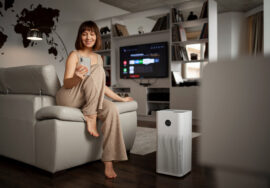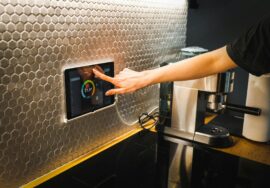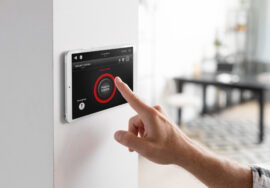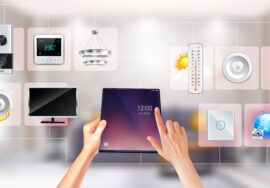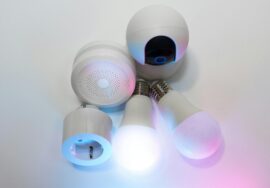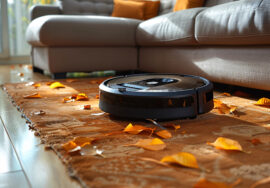
How AI Powered Smart Bedrooms Are Transforming Sleep and Well Being
Introduction: The Future of Sleep Begins at Home
Sleep is the foundation of physical and mental health, yet millions struggle with insomnia, poor rest, or disrupted sleep cycles. Traditional solutions like blackout curtains or white noise machines are helpful but limited. Today, the Smart Home revolution, powered by artificial intelligence (AI), is entering the bedroom to redefine how we rest. AI-driven smart bedrooms are no longer just a luxury—they are becoming essential tools for enhancing sleep quality, monitoring health, and improving overall well-being.
What Is an AI-Powered Smart Bedroom?
An AI-powered smart bedroom integrates connected devices—such as smart mattresses, lighting, thermostats, and sound systems—into a cohesive system managed by artificial intelligence. Unlike basic automation, where devices follow preset commands, AI-enabled setups learn your routines, analyze sleep data, and adapt in real-time to create the ideal sleep environment.
For example, a smart mattress can track your heart rate, breathing, and movement while AI adjusts room temperature and lighting to optimize your sleep stages. The result is a personalized experience that responds to your body’s needs.
Key Components of AI-Powered Smart Bedrooms
1. Smart Mattresses and Sleep Trackers
Modern smart mattresses use embedded sensors to track sleep cycles, heart rate variability, and restlessness. Paired with AI, they deliver insights and even make adjustments—such as altering mattress firmness or elevating your head to reduce snoring.
2. AI-Controlled Lighting
Lighting plays a vital role in circadian rhythms. AI-powered smart bulbs and fixtures simulate natural daylight patterns, dimming in the evening to promote melatonin production and gradually brightening in the morning to mimic sunrise, easing the waking process.
3. Climate and Air Quality Control
Smart thermostats and air purifiers adapt to your comfort preferences. AI systems can automatically reduce bedroom temperature during deep sleep stages or improve ventilation if carbon dioxide levels rise, ensuring healthier sleep conditions.
4. Smart Curtains and Soundscapes
Motorized curtains close at bedtime to block external light and open in the morning for natural wake-up cues. Meanwhile, AI-driven sound machines personalize white noise or soothing soundscapes to mask disruptive noises based on your sleep data.
5. Voice Assistants and Routines
Devices like Amazon Alexa, Google Assistant, and Apple HomeKit now serve as central hubs for smart bedrooms. AI routines allow users to control multiple aspects of the environment with a single voice command, such as “good night,” which can turn off lights, lock doors, and set the thermostat.
How AI Enhances Sleep and Well-Being
The transformative impact of AI lies in personalization and adaptability. Unlike static devices, AI learns from your behavior and biofeedback, offering benefits such as:
- Improved Sleep Quality: By optimizing lighting, noise, and temperature for each stage of sleep.
- Health Monitoring: Continuous data collection on heart rate, breathing, and rest patterns offers early warning signs for health issues.
- Stress Reduction: Calming soundscapes, aromatherapy diffusers, and AI-driven relaxation routines help manage stress before bedtime.
- Daytime Productivity: Better rest translates into improved focus, mood, and energy throughout the day.
The Role of Data in AI-Powered Bedrooms
Data is the backbone of AI in smart bedrooms. Devices collect biometric and environmental information to create detailed sleep profiles. Over time, AI identifies trends, like restlessness after late-night screen use, and recommends lifestyle adjustments.
However, this reliance on data raises important concerns about privacy and security. Smart Home providers are addressing these issues with encrypted data storage and user-controlled sharing settings. As consumers, understanding how your data is handled is critical when choosing devices.
Real-World Examples of Smart Bedroom Innovations
- Eight Sleep Pod Pro Mattress: Adjusts mattress temperature on each side of the bed for personalized comfort.
- Philips Hue Smart Lights: Offers circadian-friendly lighting modes tailored to sleep patterns.
- Google Nest Hub (2nd Gen): Provides contactless sleep tracking using radar-based technology.
- Dyson Pure Cool Purifier: Monitors and adjusts air quality in real time.
These devices highlight how diverse technologies work together to enhance both rest and health.
Benefits Beyond Sleep
AI-powered bedrooms influence more than just nightly rest—they contribute to overall well-being. By aligning sleep cycles with natural rhythms, reducing exposure to disruptive factors, and monitoring key health indicators, these systems help prevent chronic issues like fatigue, anxiety, and cardiovascular problems.
Additionally, parents can use smart bedroom tools to track children’s sleep quality, while older adults benefit from monitoring systems that detect irregular breathing patterns or sleep apnea.
Challenges and Limitations
While promising, AI-powered smart bedrooms also face hurdles:
- High Initial Costs: Advanced smart mattresses and integrated systems can be expensive.
- Compatibility Issues: Not all devices are Matter or cross-platform compatible yet.
- Data Privacy: Sensitive health data requires strict protection.
- Learning Curve: Setting up and fine-tuning AI routines may be complex for beginners.
As technology matures and adoption increases, these challenges are expected to lessen, making smart bedrooms more accessible.
Preparing Your Bedroom for AI Integration
If you’re considering upgrading, here’s how to begin:
- Start Small: Begin with smart lighting and a sleep tracker to gather baseline data.
- Expand Gradually: Add devices like smart thermostats, curtains, and air purifiers for a complete experience.
- Check Ecosystem Compatibility: Ensure your devices are compatible with platforms like Google Home, Apple HomeKit, or Amazon Alexa.
- Prioritize Privacy: Select devices with strong security features and transparent data policies.
This step-by-step approach makes it easier to transition without overwhelming costs or complexity.
The Future of AI-Powered Smart Bedrooms
The next generation of AI bedrooms will likely feature deeper biometric integration, such as wearable-free monitoring, adaptive furniture, and even predictive wellness alerts. Combined with universal standards like Matter, these systems will offer seamless compatibility and greater personalization.
Over time, smart bedrooms will evolve into wellness hubs that not only enhance sleep but also serve as early warning systems for health management.
Conclusion: A Smarter Way to Rest
AI-powered smart bedrooms are redefining what it means to rest well in the modern world. By blending biometric insights, automation, and personalization, they create an environment that fosters deep sleep and long-term well-being. Though challenges remain in cost and privacy, the benefits are undeniable.
For homeowners embracing the Smart Home revolution, the bedroom is no longer just a place to sleep—it is a smart wellness sanctuary that actively improves health, mood, and daily performance.

